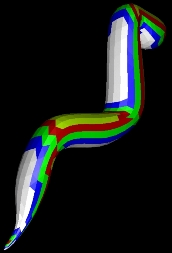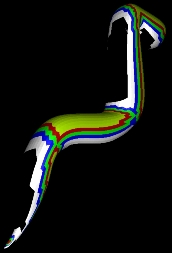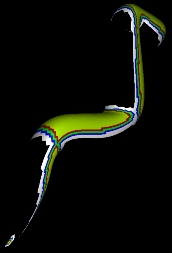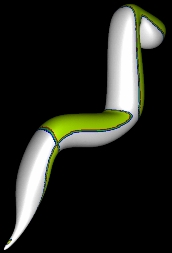For animated (where the vertices can move freely) subdivision surfaces,
each point on the subdivision surface has to be recomputed each frame. The
idea is to avoid computing points (for each subdivision step) that do not
belong to any polygon contributing to the final image.





The camera is located to the upper right back, in front
of the worm's "head", for all images.
From left to right:
1) inital worm mesh (color codes: white=total back,
blue=strong, green=back, red=front, yellow=total front),
2) after one subdivision step (white triangles from the previous step
have been discarded and thus not subdivided ),
3) after two subdivision steps,
4) after three subdivision steps (which is
what we send to the graphics pipeline),
5) what normally is sent to the graphics pipeline without our technique.
Then the graphics pipeline can do normal backface culling.
We achieved a speed-up of close to 100% and used about 50% of
the memory (compared to using no backface culling).
The slides from my presentation at SIGGRAPH 2000
are available, as well as an early draft of the
sketch.
Tomas Möller
/ tompa@acm.org
Last change: September 6, 2000




